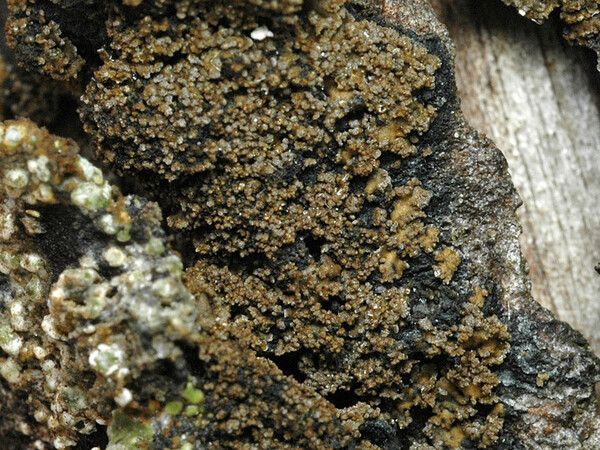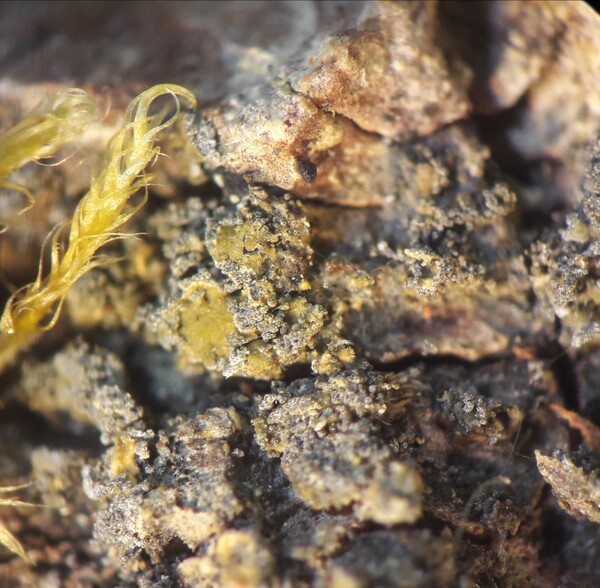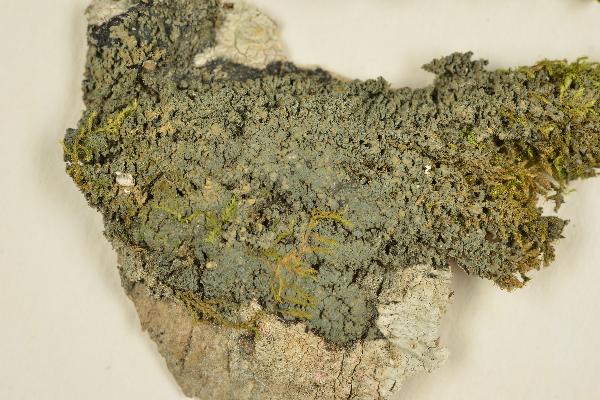Fuscopannaria confusa (P.M. Jørg.) P.M. Jørg.
J. Hattori Bot. Lab., 76: 205, 1994.. Basionym: Pannaria confusa P.M. Jørg. - Ann. Bot. Fenn. 28, 1: 87, 1991.
Synonyms:
Distribution: N - TAA (Nascimbene & al. 2021, 2022).
Description: Thallus squamulose, heteromerous, episubstratic, 100-150 µm thick, blue-grey to olive-brown, of 1-2 mm wide, rounded or slightly elongate, contiguous or imbricate, sorediate squamules with a white-felted, upturned margin, developing on a thin, often inconspicuous, blue-black hypothallus, usually forming a thick, cracked crust. Soredia granular, blue-grey, arranged in marginal, sometimes finally confluent soralia which do not tend to become woolly in the herbarium. Upper cortex sclerenchymatous, 25-40 µm thick, of thick-walled cells; lower cortex absent. Apothecia very rare, lecanorine, up to 1 mm across, with a concave, brown disc and a sorediate thalline margin. Proper exciple subparaplectenchymatous; epithecium pale brown; hymenium colourless, hemiamyloid, I+ blue-green turning reddish; paraphyses simple, coherent, tje apical cells slightly swollen; hypothecium colourless. Asci 8-spored, subcylindrical to clavate, with a I+ blue tholus and an internal, more intensely I+ blue apical plug. Ascospores 1-celled, hyaline, ellipsoid, with a thick epispore and broadly attenuated apices, 12-15 x 5-8 µm without epispore, 17-23 x 8-9 µm with epispore. Photobiont cyanobacterial (Nostoc, the cells in clusters). Spot tests: thallus K-, C-, KC-, P-, UV-. Chemistry: terpenoids and aliphatic acids. Note: a rare European species with a boreal to temperate-high montane distribution, found on branches of various trees and shrubs near the ground, but also on rocks in very humid places, like in the spray zone of waterfalls; known from a few localities in the Alps.
Growth form: Squamulose
Substrata: bark and rocks
Photobiont: cyanobacteria, filamentous (e.g. Nostoc, Scytonema)
Reproductive strategy: mainly asexual, by soredia, or soredia-like structures (e.g. blastidia)
Most common in areas with a humid-warm climate (e.g. most of Tyrrenian Italy)
Commonnes-rarity: (info)
Alpine belt: absent
Subalpine belt: extremely rare
Oromediterranean belt: absent
Montane belt: extremely rare
Submediterranean belt: absent
Padanian area: absent
Humid submediterranean belt: absent
Humid mediterranean belt: absent
Dry mediterranean belt: absent
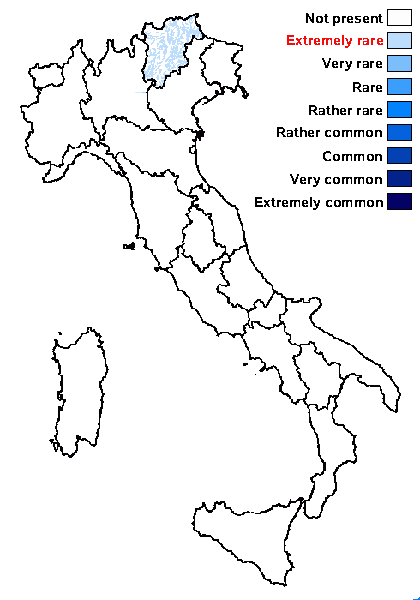
Predictive model
Herbarium samples
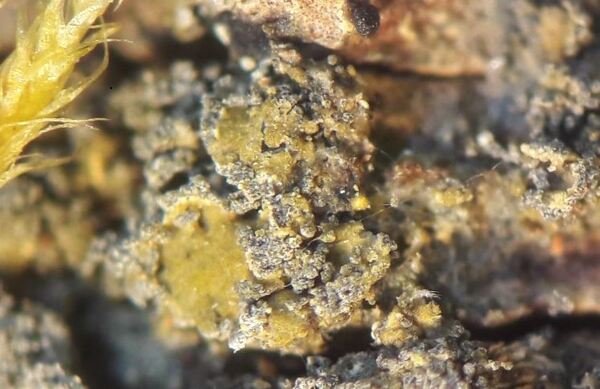

J. Nascimbene - CC BY-SA 4.0
Italy, Trentino-Alto Adige, Trento, Val Ceremana, Paneveggio-Pale di San Martino Natural Park, on Salix caprea (UTM WGS84: 32T 710023.5129742), 1760 m
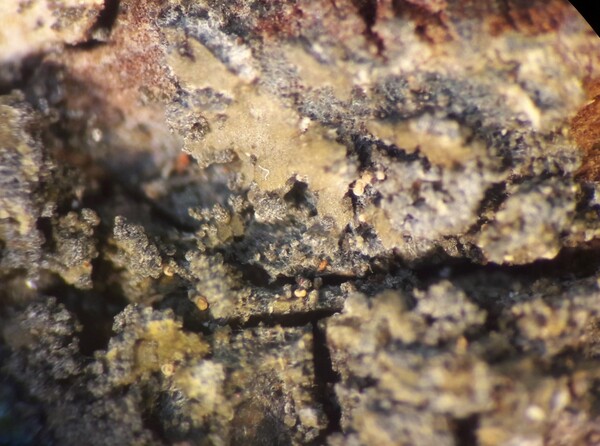

J. Nascimbene - CC BY-SA 4.0
Italy, Trentino-Alto Adige, Trento, Val Ceremana, Paneveggio-Pale di San Martino Natural Park, on Salix caprea (UTM WGS84: 32T 710023.5129742), 1760 m
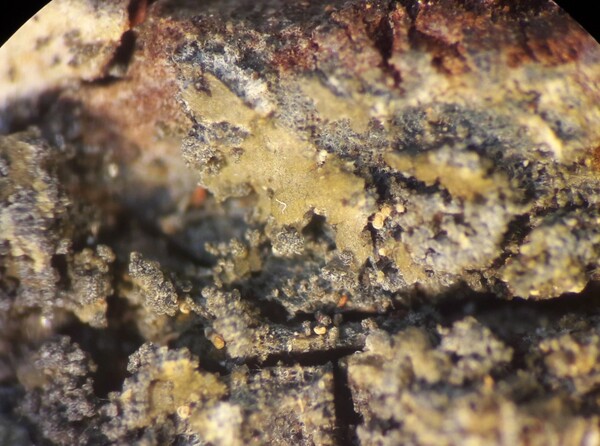

J. Nascimbene - CC BY-SA 4.0
Italy, Trentino-Alto Adige, Trento, Val Ceremana, Paneveggio-Pale di San Martino Natural Park, on Salix caprea (UTM WGS84: 32T 710023.5129742), 1760 m
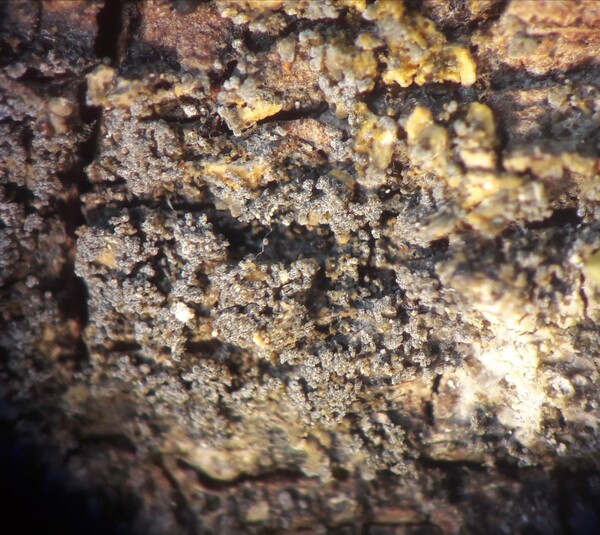

J. Nascimbene - CC BY-SA 4.0
Italy, Trentino-Alto Adige, Trento, Val Ceremana, Paneveggio-Pale di San Martino Natural Park, on Salix caprea (UTM WGS84: 32T 710023.5129742), 1760 m
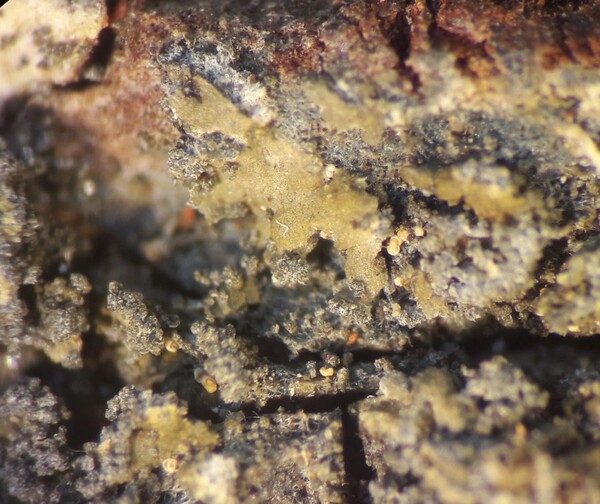

J. Nascimbene - CC BY-SA 4.0
Italy, Trentino-Alto Adige, Trento, Val Ceremana, Paneveggio-Pale di San Martino Natural Park, on Salix caprea (UTM WGS84: 32T 710023.5129742), 1760 m
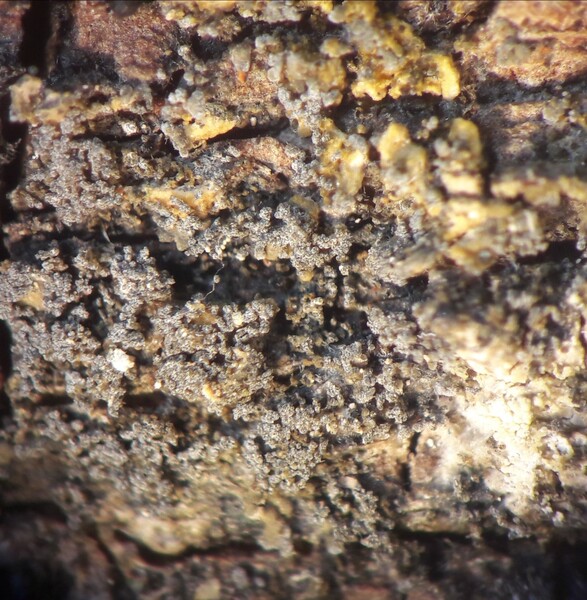

J. Nascimbene - CC BY-SA 4.0
Italy, Trentino-Alto Adige, Trento, Val Ceremana, Paneveggio-Pale di San Martino Natural Park, on Salix caprea (UTM WGS84: 32T 710023.5129742), 1760 m
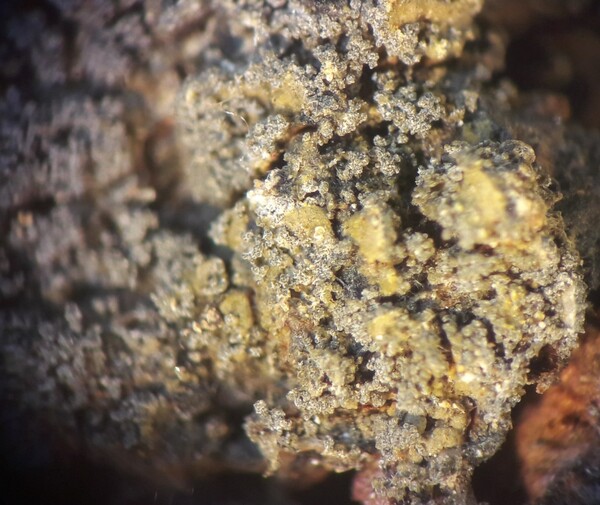

J. Nascimbene - CC BY-SA 4.0
Italy, Trentino-Alto Adige, Trento, Val Ceremana, Paneveggio-Pale di San Martino Natural Park, on Salix caprea (UTM WGS84: 32T 710023.5129742), 1760 m
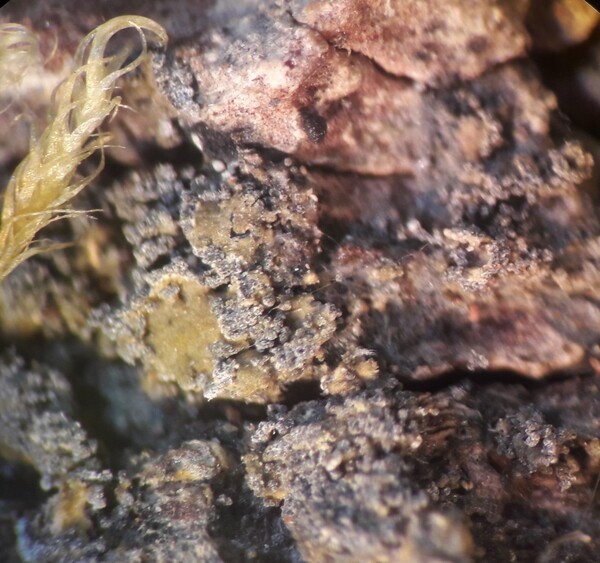

J. Nascimbene - CC BY-SA 4.0
Italy, Trentino-Alto Adige, Trento, Val Ceremana, Paneveggio-Pale di San Martino Natural Park, on Salix caprea (UTM WGS84: 32T 710023.5129742), 1760 m
Growth form: Squamulose
Substrata: bark and rocks
Photobiont: cyanobacteria, filamentous (e.g. Nostoc, Scytonema)
Reproductive strategy: mainly asexual, by soredia, or soredia-like structures (e.g. blastidia)
Most common in areas with a humid-warm climate (e.g. most of Tyrrenian Italy)
Commonnes-rarity: (info)
Alpine belt: absent
Subalpine belt: extremely rare
Oromediterranean belt: absent
Montane belt: extremely rare
Submediterranean belt: absent
Padanian area: absent
Humid submediterranean belt: absent
Humid mediterranean belt: absent
Dry mediterranean belt: absent

Predictive model
| Herbarium samples |


J. Nascimbene - CC BY-SA 4.0
Italy, Trentino-Alto Adige, Trento, Val Ceremana, Paneveggio-Pale di San Martino Natural Park, on Salix caprea (UTM WGS84: 32T 710023.5129742), 1760 m


J. Nascimbene - CC BY-SA 4.0
Italy, Trentino-Alto Adige, Trento, Val Ceremana, Paneveggio-Pale di San Martino Natural Park, on Salix caprea (UTM WGS84: 32T 710023.5129742), 1760 m


J. Nascimbene - CC BY-SA 4.0
Italy, Trentino-Alto Adige, Trento, Val Ceremana, Paneveggio-Pale di San Martino Natural Park, on Salix caprea (UTM WGS84: 32T 710023.5129742), 1760 m


J. Nascimbene - CC BY-SA 4.0
Italy, Trentino-Alto Adige, Trento, Val Ceremana, Paneveggio-Pale di San Martino Natural Park, on Salix caprea (UTM WGS84: 32T 710023.5129742), 1760 m


J. Nascimbene - CC BY-SA 4.0
Italy, Trentino-Alto Adige, Trento, Val Ceremana, Paneveggio-Pale di San Martino Natural Park, on Salix caprea (UTM WGS84: 32T 710023.5129742), 1760 m


J. Nascimbene - CC BY-SA 4.0
Italy, Trentino-Alto Adige, Trento, Val Ceremana, Paneveggio-Pale di San Martino Natural Park, on Salix caprea (UTM WGS84: 32T 710023.5129742), 1760 m


J. Nascimbene - CC BY-SA 4.0
Italy, Trentino-Alto Adige, Trento, Val Ceremana, Paneveggio-Pale di San Martino Natural Park, on Salix caprea (UTM WGS84: 32T 710023.5129742), 1760 m


 INDEX FUNGORUM
INDEX FUNGORUM
 GBIF
GBIF
 DOLICHENS
DOLICHENS
